1lumen selects and reviews products personally. We may earn affiliate commissions through our links, which help support our testing.
Fenix CL26R Pro review
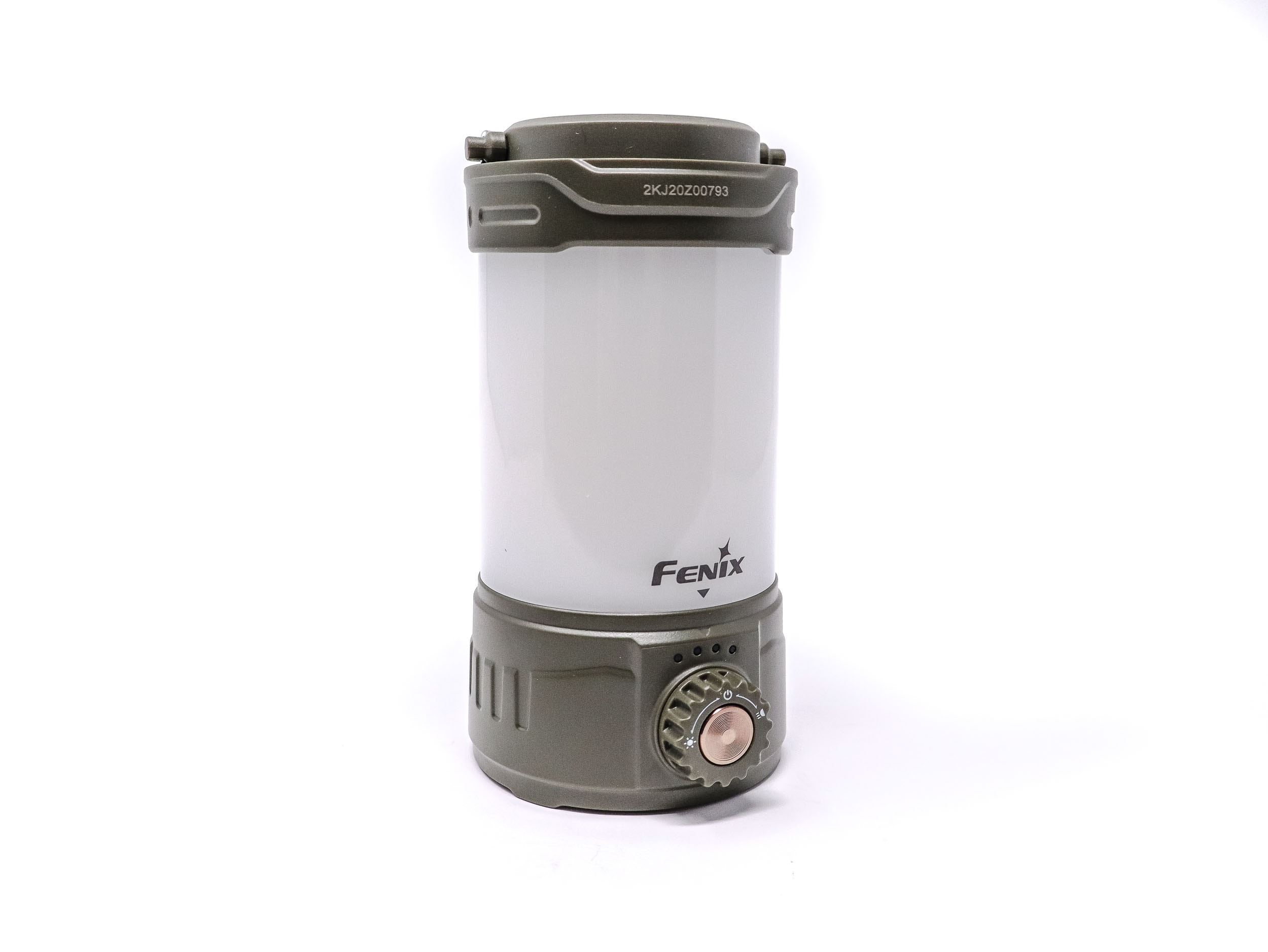
Fenix CL26R Pro specs
| Brand & Model | Fenix CL26R Pro |
|---|---|
| Flashlight category | Lantern |
| LED | Unknown |
| Max. output | 650 max lumens |
| Max. beam distance | 15 meters |
| Max. beam intensity | ? |
| Battery config. | 1*21700 |
| Onboard charging | USB type C |
| Main modes | 3 |
| Blinkies | Beacon |
| Waterproof | IP66 |
| Review publication date | January 2023 |
Review intro:
Fenix is a familiar face here at 1Lumen. They’re truly a global company and have carved out a nice bit of real estate in the outdoor accessory market and lots of flashlight enthusiasts and everyday folks alike look to Fenix for high quality, high performance products. I’ve reviewed a bunch of Fenix flashlights, but the one on the docket today is a new one (for me at least) since this is my first Fenix lantern.
When the pandemic seclusion mandates lifted, millions of cabin fever-afflicted individuals ran (literally) for the hills, lakes, mountains, beaches, and rivers for the first time in a while, or ever, for outdoor fun and activities. Whether doing the #vanlife thing, camping, backpacking, ‘glamping,’ or just pitching a tent in your backyard, a lantern (or a good headlamp) is an indispensable tool for when you can’t flip a switch and turn the lights on. Typically run on fossil fuels, lanterns were relegated to outdoor-use only due to fumes that could make you dead or intense heat that may cause a fire which can also make you dead. Since nobody wants that, companies started sticking CFL tubes into lanterns and running them off lead acid batteries (or a bunch of D cells), later switching to COB LEDs in the late 90’s.
Fast-forward 20 years and lanterns got smaller, brighter, and longer-running. In fact, they’ve gotten really good, like the Olight O’Lantern series, which I tested, and the minimalist Wuben F5 area light. Fenix has a nice lantern too in their CL26R compact lantern. Well, now there’s a new-ish one, the Fenix CL26R Pro. This one represents a nice upgrade to the CL26R, and on paper looks really good! The output is increased, there’s a redesigned battery layout, and more modes. Let’s take a look.
Package quality.
The CL26R comes in a retail-able package. It’s an upright plastic box with a clear front for a 270 degree product presentation. It’s very nice with lots of feature blurbs and graphics. Here’s what’s inside:
- Fenix CL26R Pro
- USB type C charging cable
- Fenix ARB-L21-5000 V2 battery
- Spare o-ring
- User manual
- Warranty card
This is a complete, ready-to-go kit as expected. The battery was sitting at 3.65 volts, and while charged enough for an acceptable amount of light and runtime, still needs to be fully recharged for at least 30 minutes (remove the insulation isolator under the negative end of the battery first).
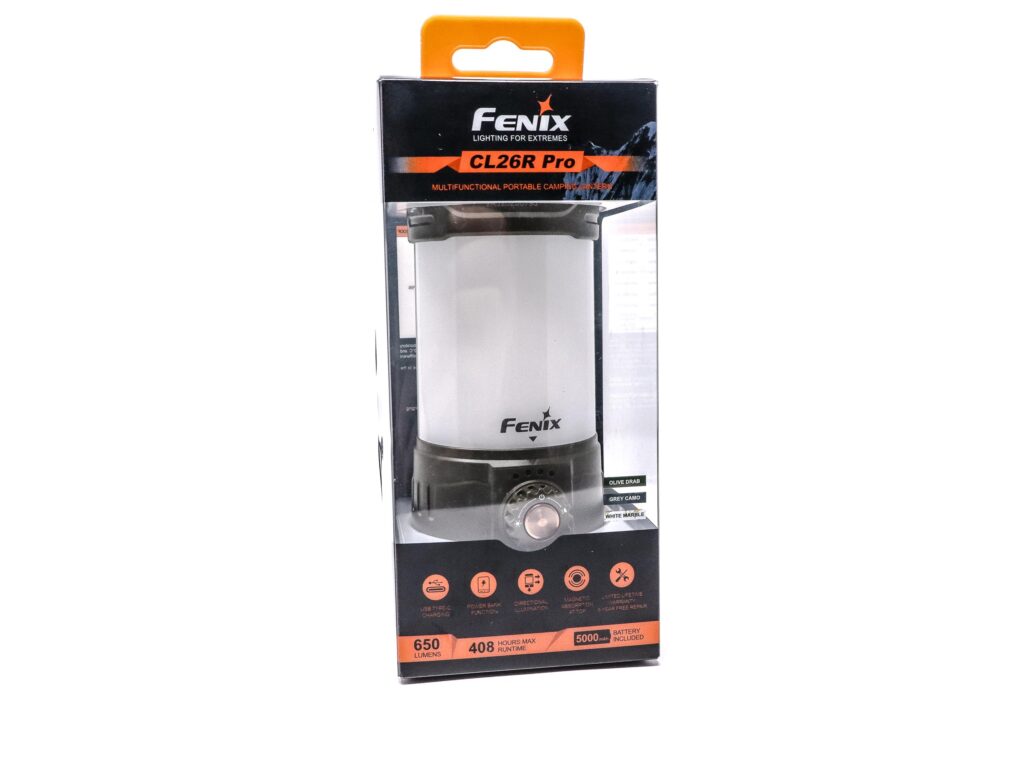
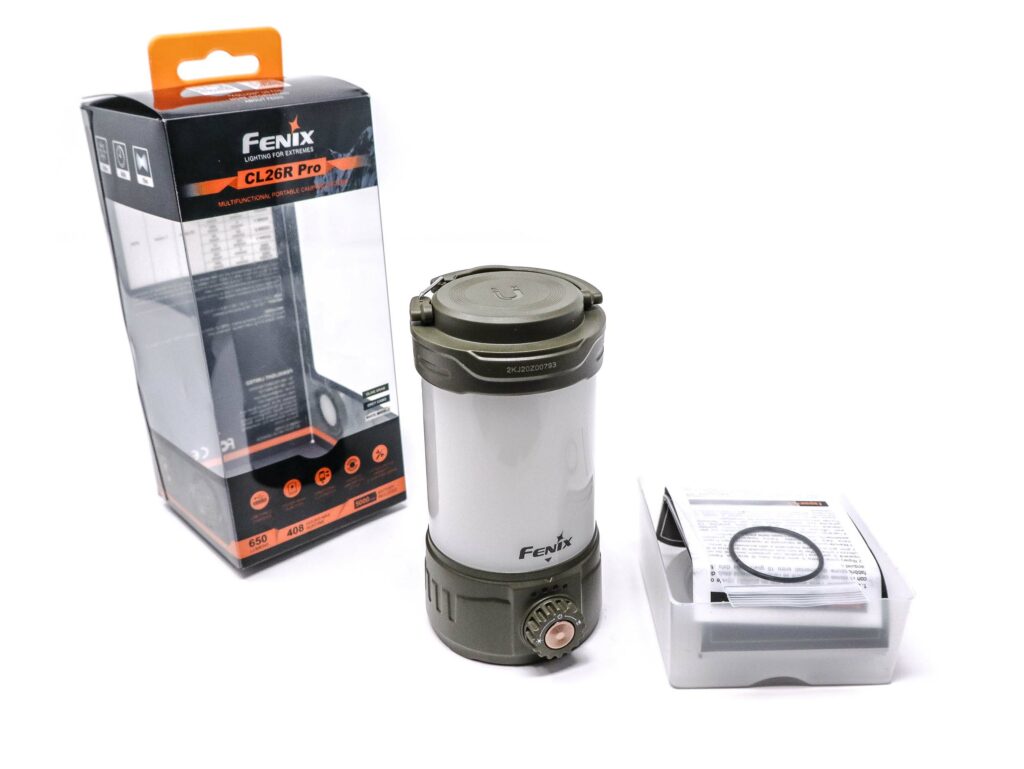
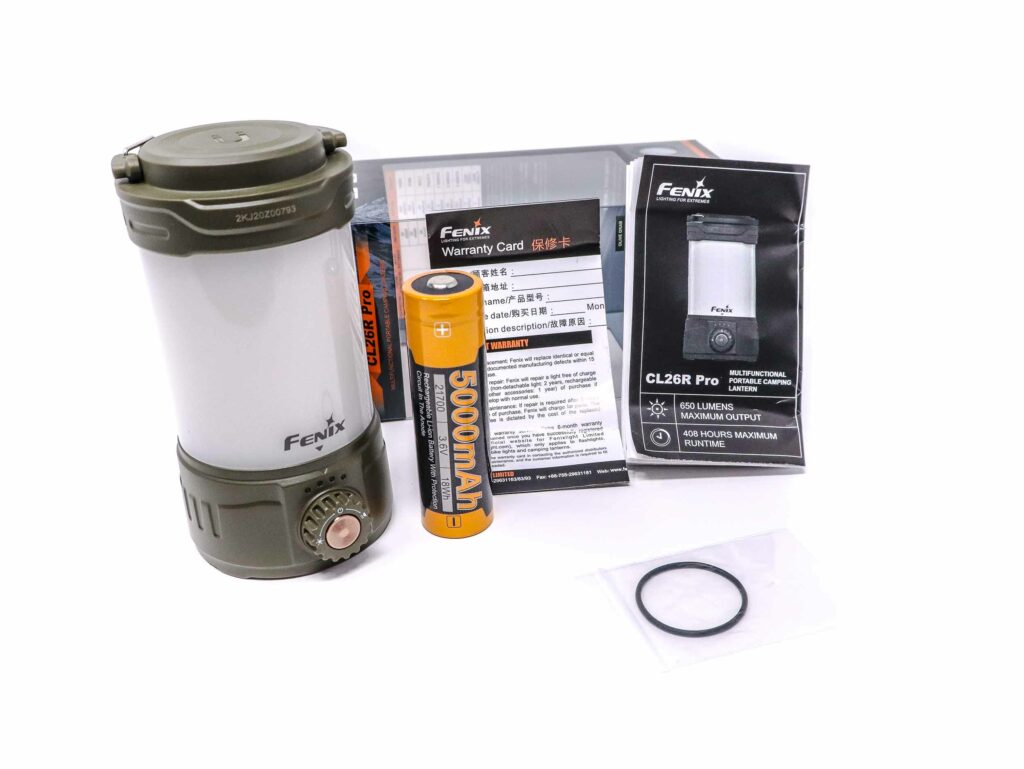
Flashlight in use, Build Quality, and Warranty
The Fenix CL26R Pro is a lantern. It can be hung up, stuck onto a metal surface thanks to the magnet in the top, or set up like a regular lantern. It’s delightfully compact, smaller than a can of soup and much lighter. Being battery powered, it doesn’t generate burning heat or fumes like a fossil-fueled lantern does, so you can use it indoors, in your car, or a shelter.
Using the Fenix CL26R Pro is super-easy.
The magnetic top easily held the lantern up at a 90 degree angle (but you need a large, flat surface). The base is also flat and stable (with a non-slip border), and for hanging, there’s a folding handle with a spring-loaded quick release clasp.
For switching, there’s a single knob with a central e-switch on the front for on/off, brightness, and lighting mode changes. This is similar to the Olight O’Lantern and I like it there, so I like it here. The knob feels nice with detented stops and has LED indicators for each brightness level. The center e-switch has a nice clicky feel that’s totally acceptable. The switch also switches between lighting modes (the 360 degree or the downward pointing).
Access to the battery is through the top. The ‘chimney’ of the lantern unscrews to access the single 21700 battery. Opposite the switch on the back, there’s USB type C input and type A outputs covered by a rubber flap. The base of the lantern has a secondary light source that fires downwards, so you get 360 degree lighting and downward lighting when the lantern is hung up for better coverage. There’s lighting modes for white light and red light in either continuous or flashing (for the red light).
For the build quality, it’s typical Fenix all-around, so you get solid build quality, excellent attention to detail, and fantastic fit and finish. The CL26R Pro comes in at a premium over the entry-level CL26R, at around $80 US. That’s not cheap, but doesn’t undercut the O’Lantern either, so it’s still competitively priced for what you get.
The lantern housing and the diffusers are made from tough ABS plastic. Everything feels high quality and nicely put together. It passed the creak and maracas test just fine with sound build quality, fit and finish. I’d be suspect of the handle for durability though since it seemed a bit too bendy and could break off if dropped or handled ‘roughly.’ For normal use though, it seems sturdy.
You can get the CL26R Pro in three color schemes: White Marble, Olive Drab, and Grey Camp. The test light came in the olive drab, and I quite like it. The threads for the cap are molded plastic and really thick triangular units. I didn’t experience issues with cross-threading, and they’re smooth. There’s a single o-ring sealing the battery access, and Fenix says it will hold up under a 3-foot drop, and it’s IP66 rated for ingress protection. Rainstorms, humidity, and dust shouldn’t be an issue for the CL26R Pro.
Warranty? From Fenix:15 days free replacement: Fenix will replace a new product within 15 days of purchase for any manufacturing defects if problems come into being in normal use; We will replace it with the same model. If the model has been discontinued, customers will receive a product with similar or improved model.5 years free repairs: Fenix will offer free repair within 5 years for lights from the date of purchase if problem develops with normal use. Different warranty period for different products:
• Flashlight, Headlamp, Bike Light and Camping Lantern (without a built-in battery) – 5 years (excludes rechargeable battery)
• Flashlight, Headlamp, Bike Light and Camping Lantern (with a built-in battery) – 2 years (battery included)
• Rechargeable battery, battery charger, bike mount, remote pressure switch – 1 year
Except the products and accessories listed above, other products or free offers provided by Fenix are not covered within the product’s warranty. Limited Lifetime Warranty: For lights past the free repair warranty period, we provide lifetime repairs but will charge for parts. Fenix Lighting LLC will notify customer the cost of the part before repair. Please note, due to changing technology, not all older lights will be able to be repaired due to parts not being available. In such cases, Fenix Lighting LLC may provide a discount to the customer for the purchase of a newer model.
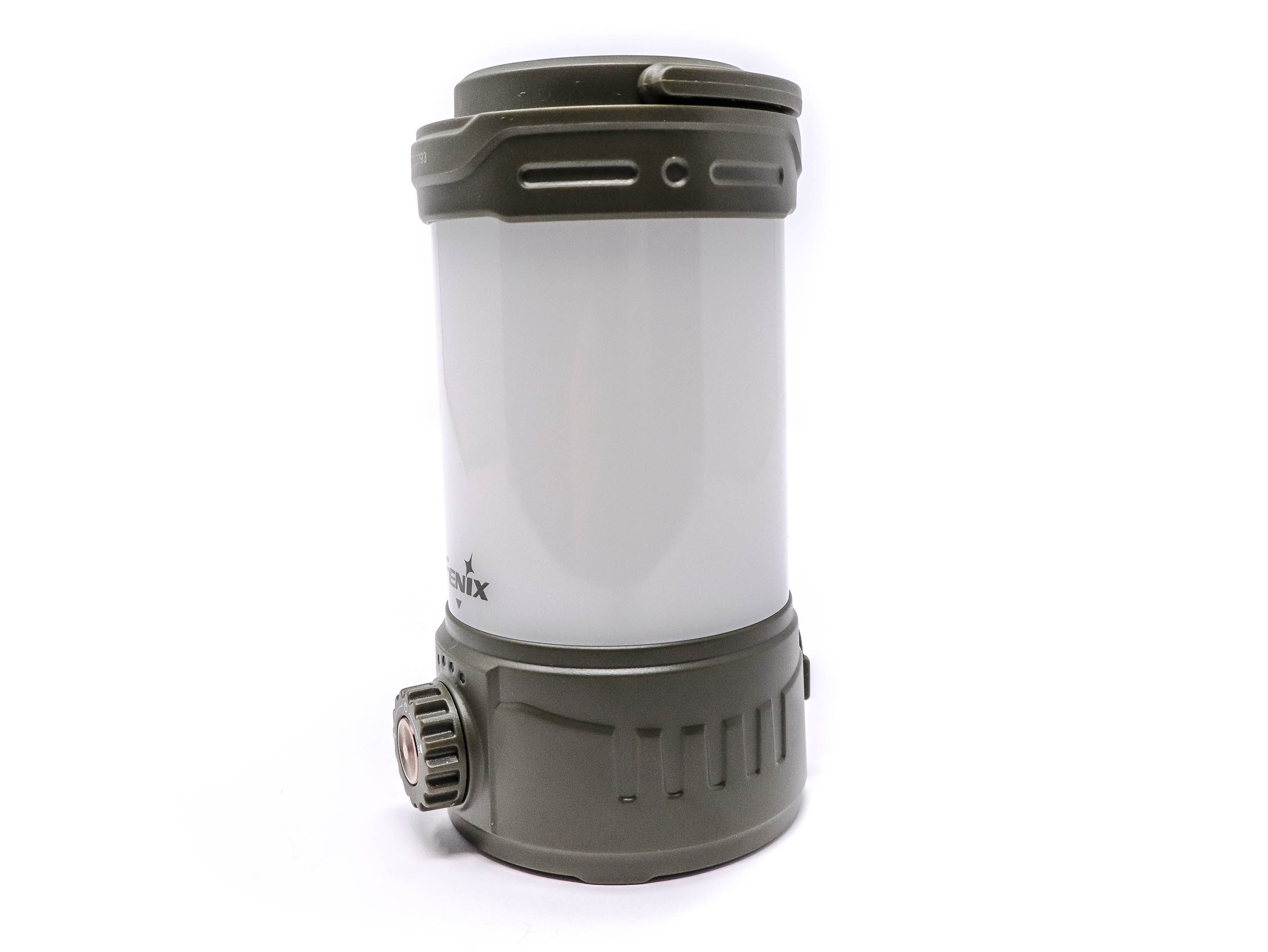
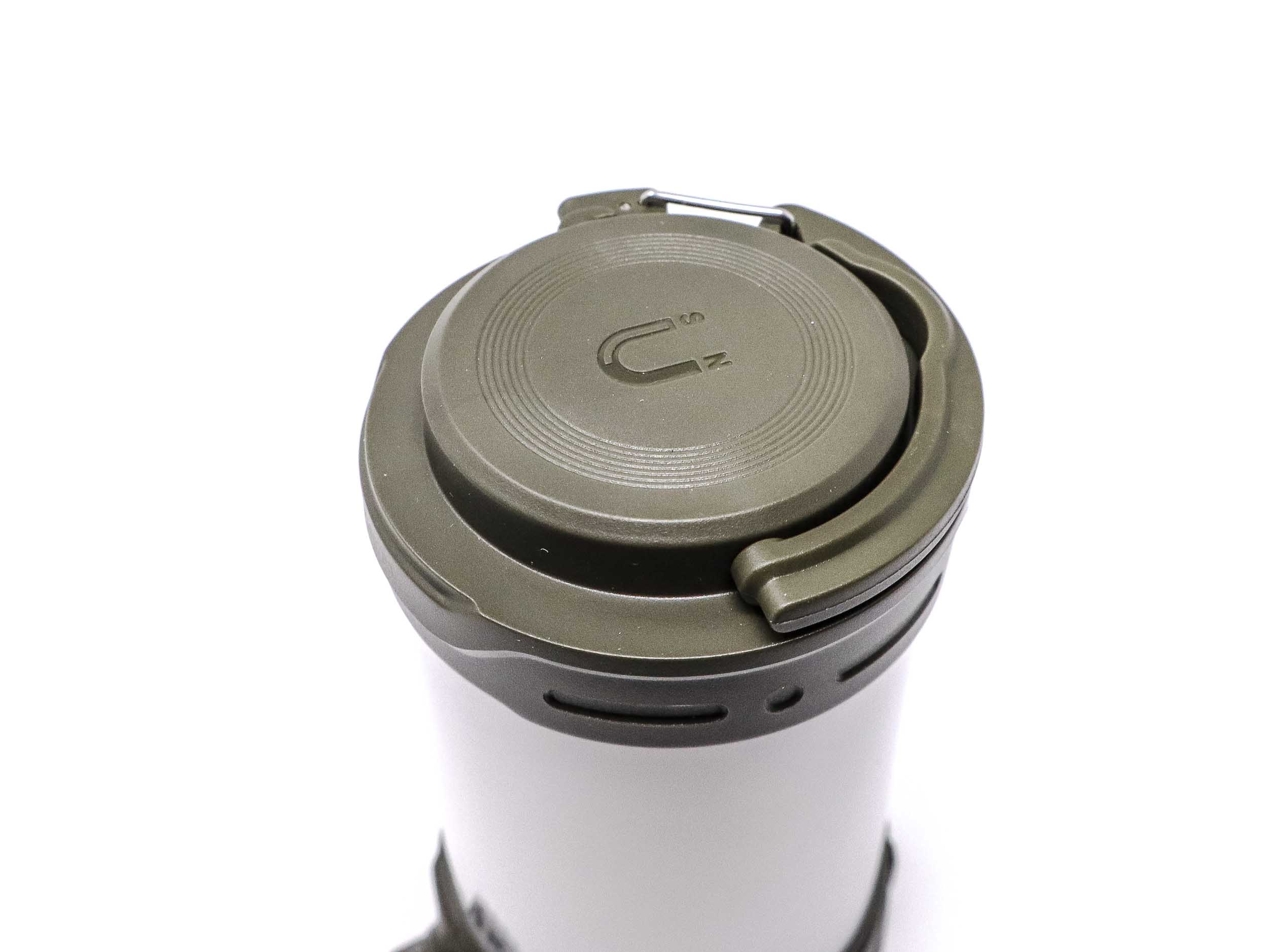
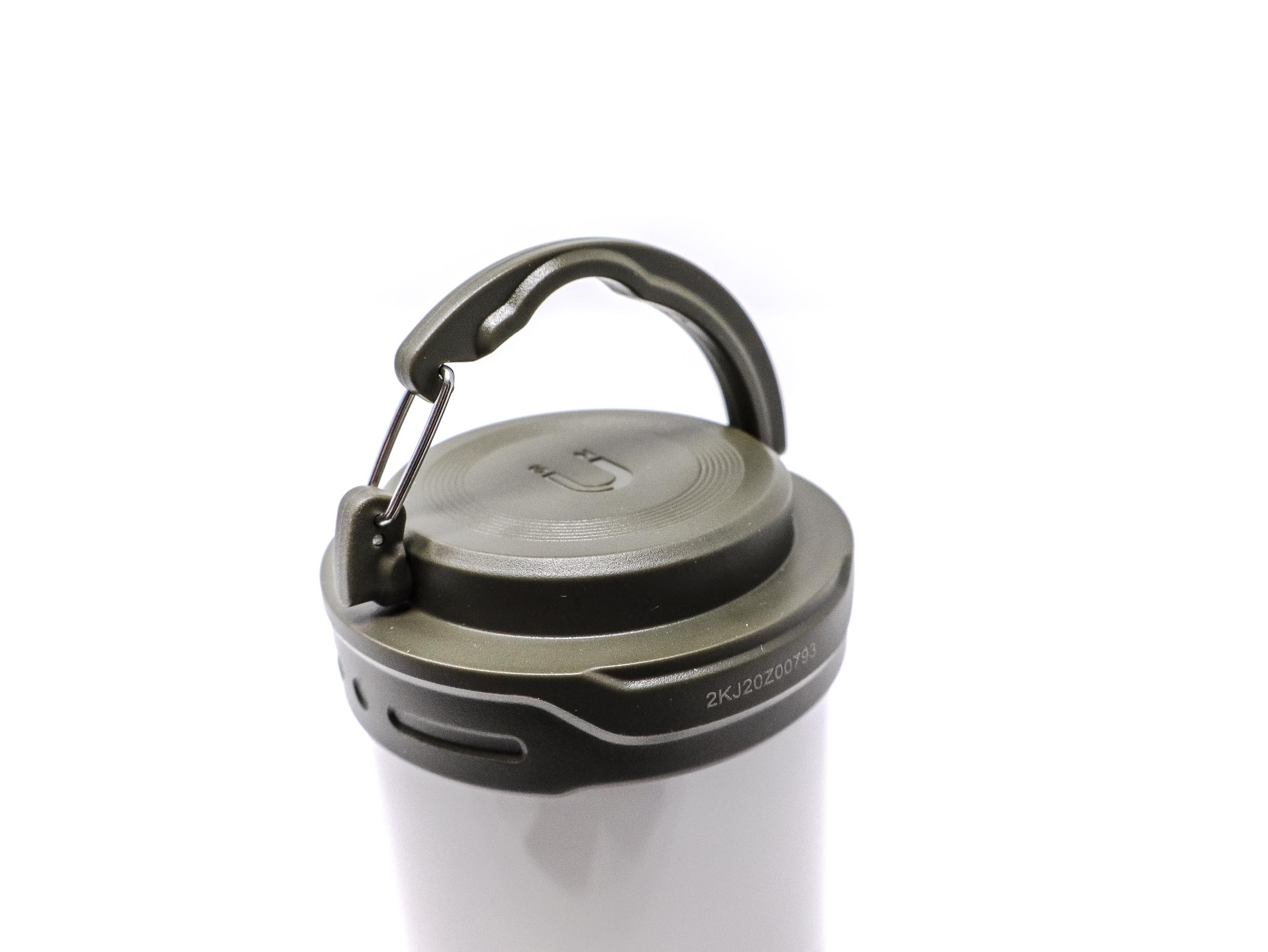
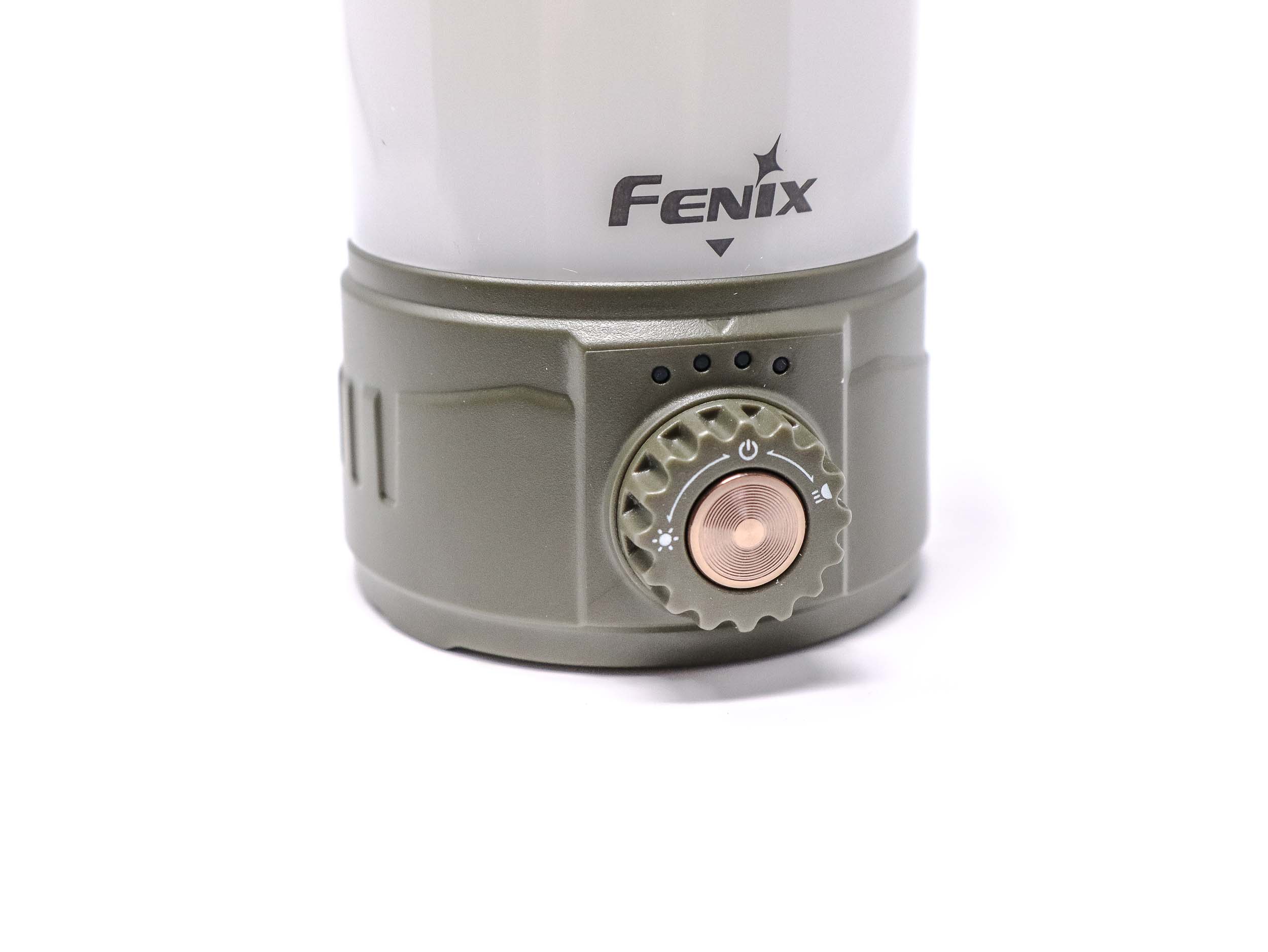
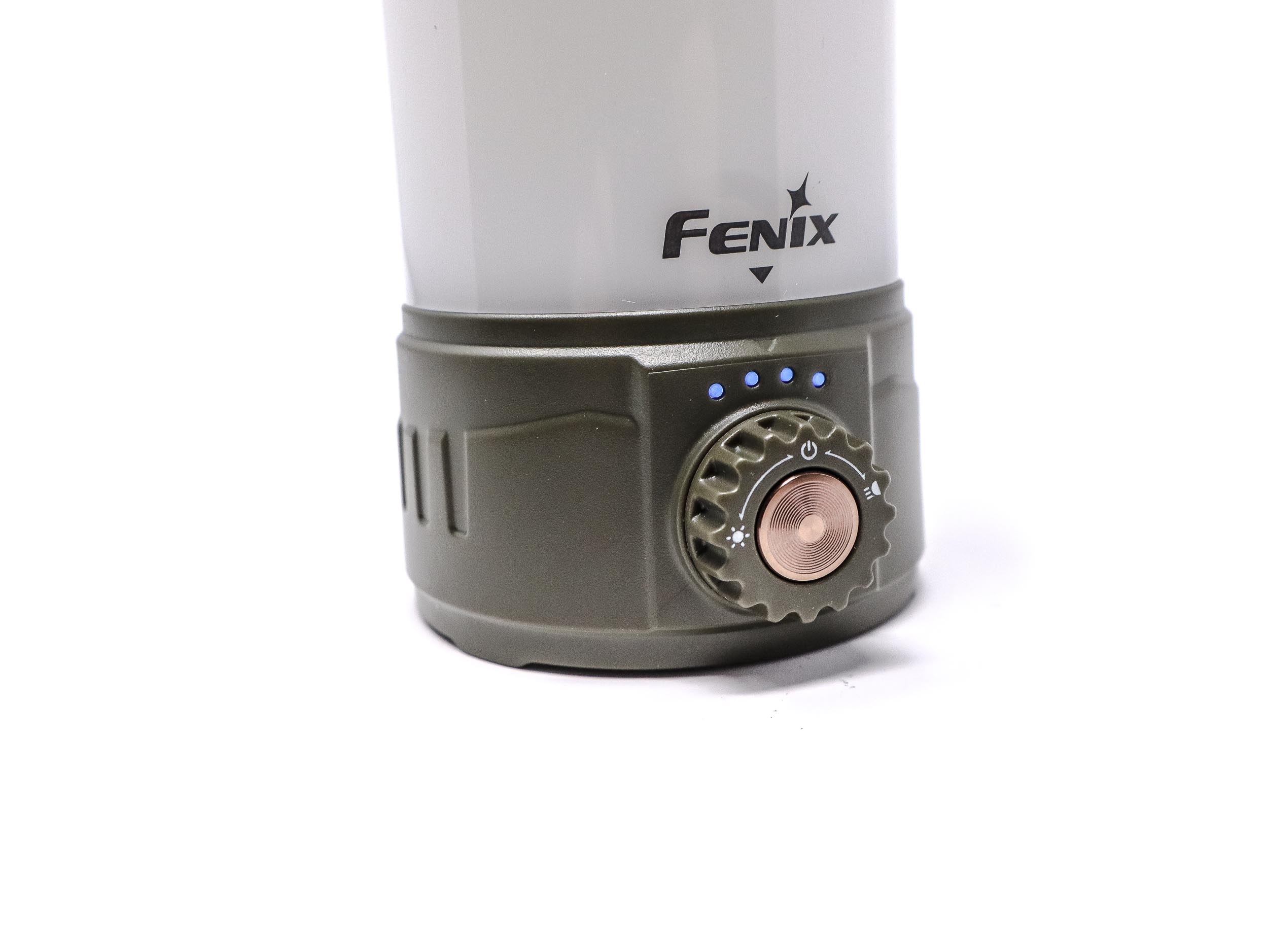
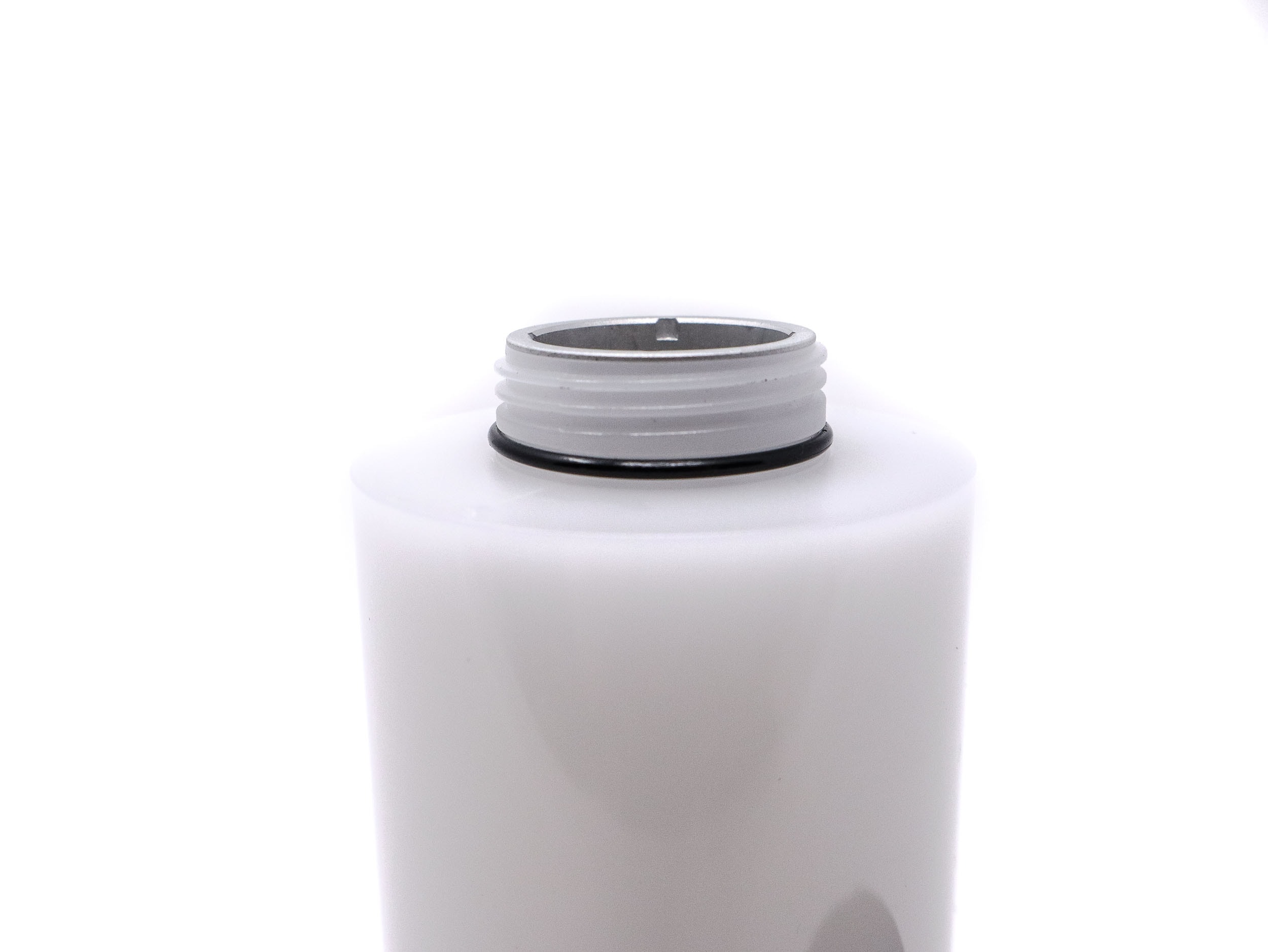
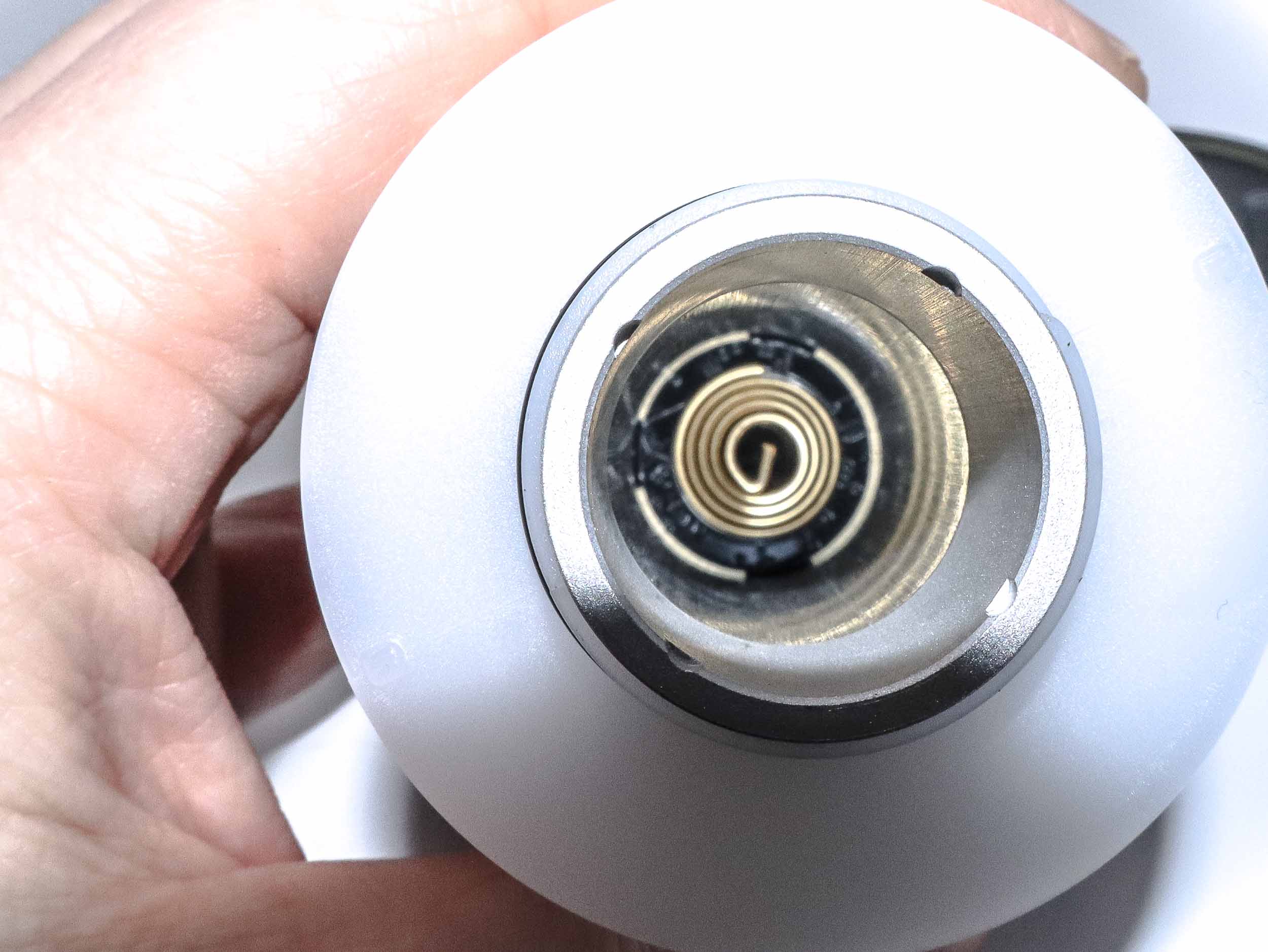
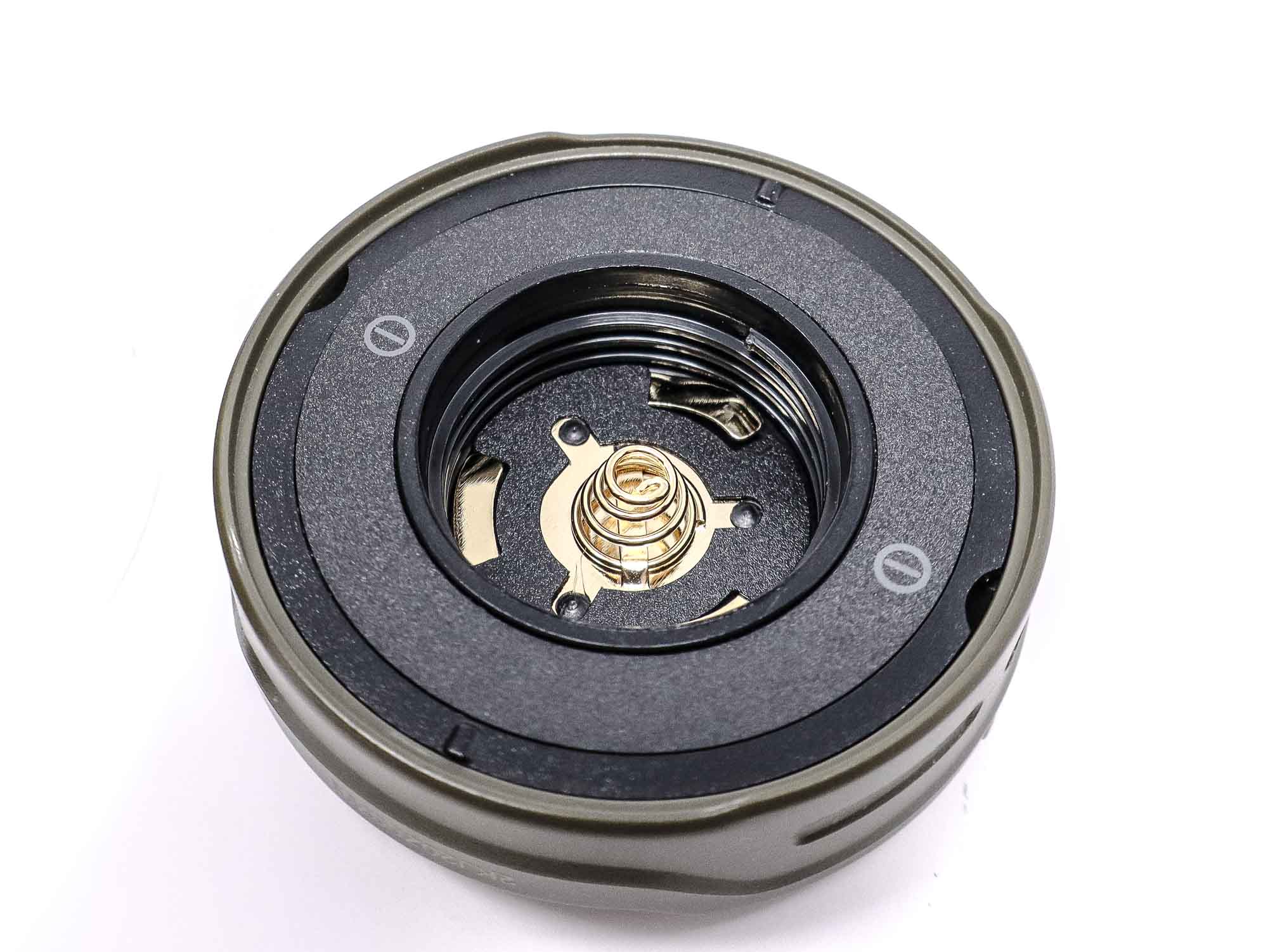
LED, Lens, Bezel, Beam, and Reflector
Spectral measurements:
I used the Opple Lightmaster Pro to measure the lantern at 1 meter from the sensor.
| Mode: | CCT: | CRI Ra: | duv |
|---|---|---|---|
| High | 4221 | 79.8 | -0.0002 |
| Down 3 | 5813 | 70.7 | 0.0027 |
Only the actual lantern LEDs are high-ish (not 90+ though) CRI and warm tint. The downward light source is cool white and low CRI.
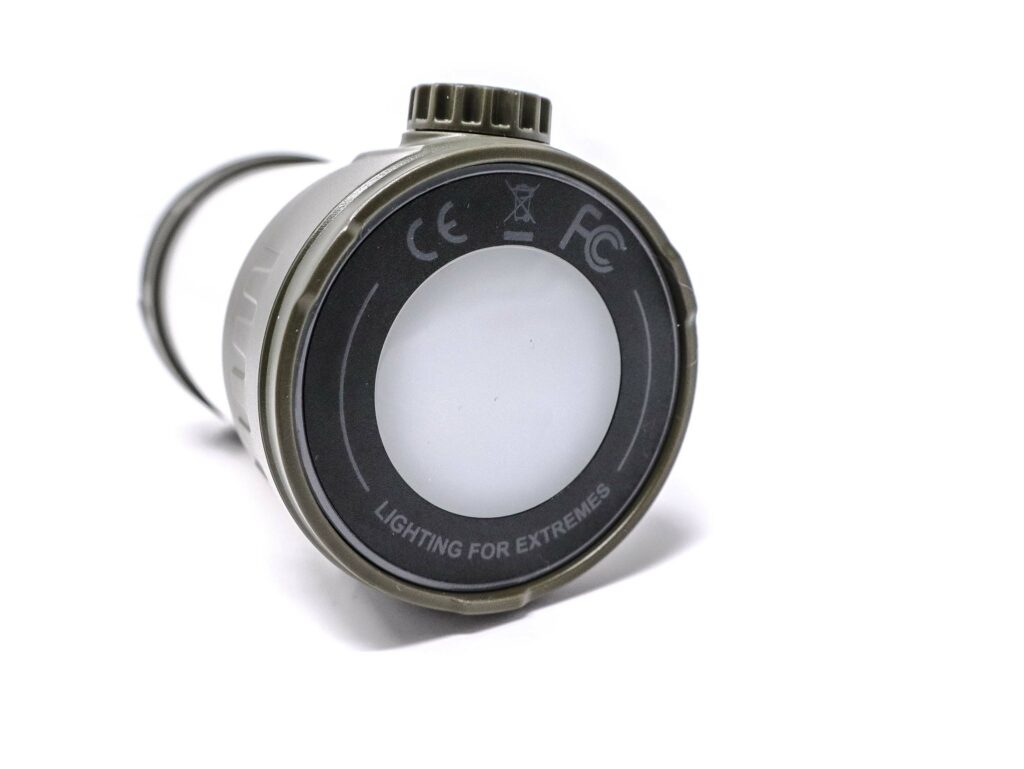
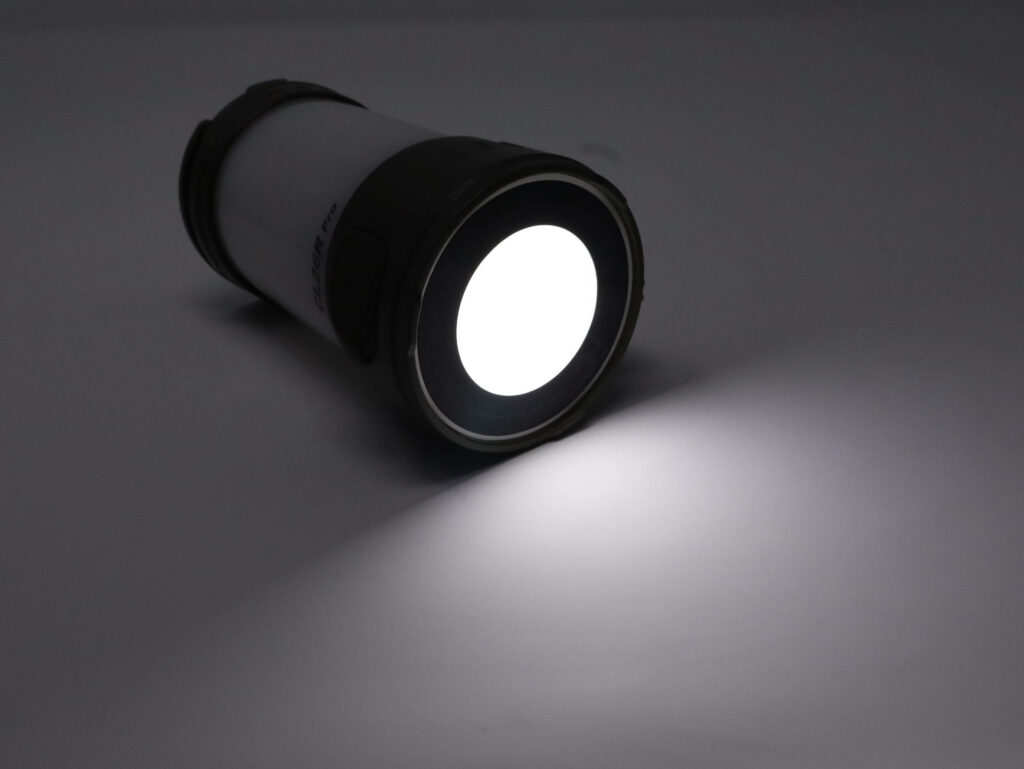
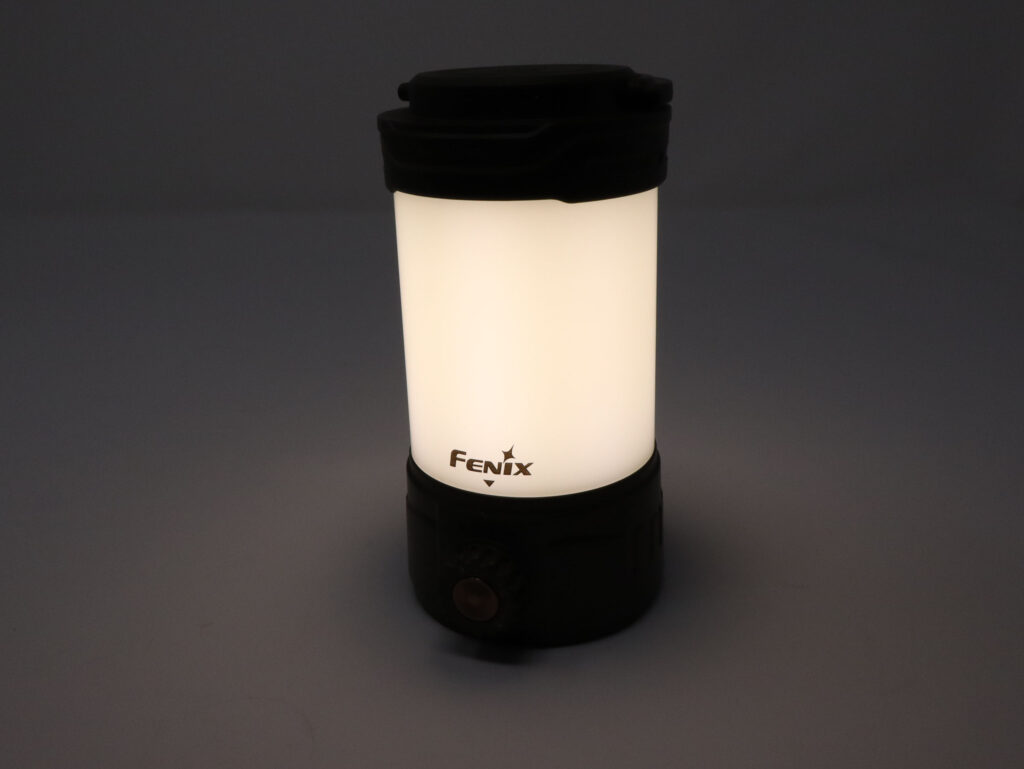
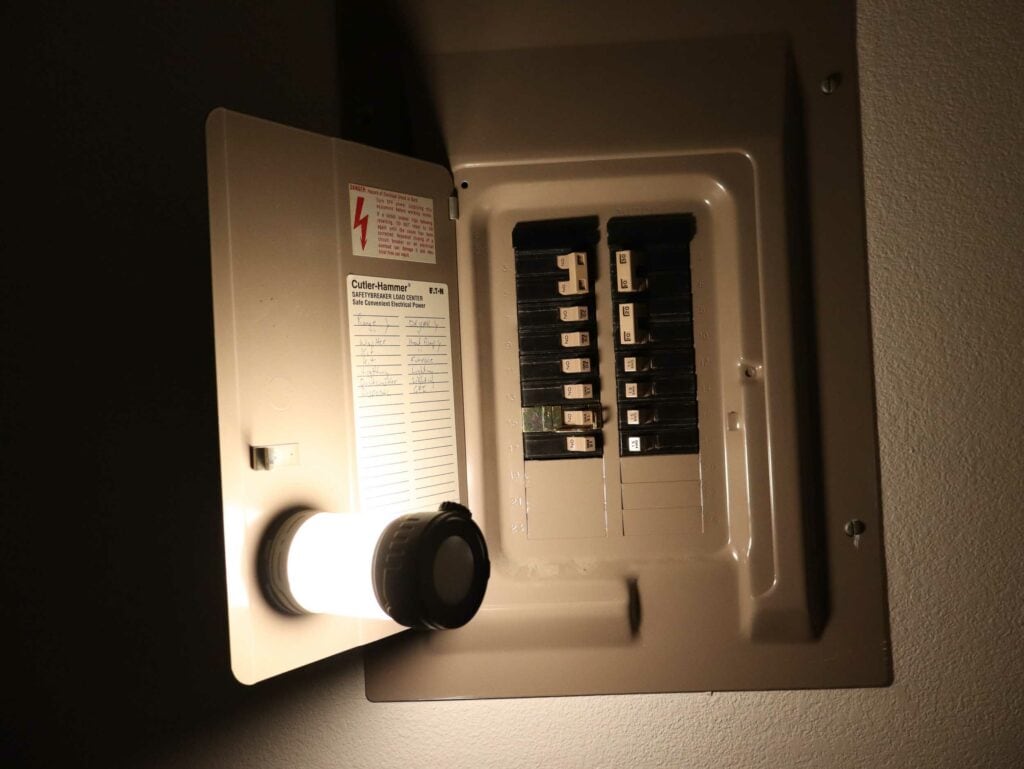
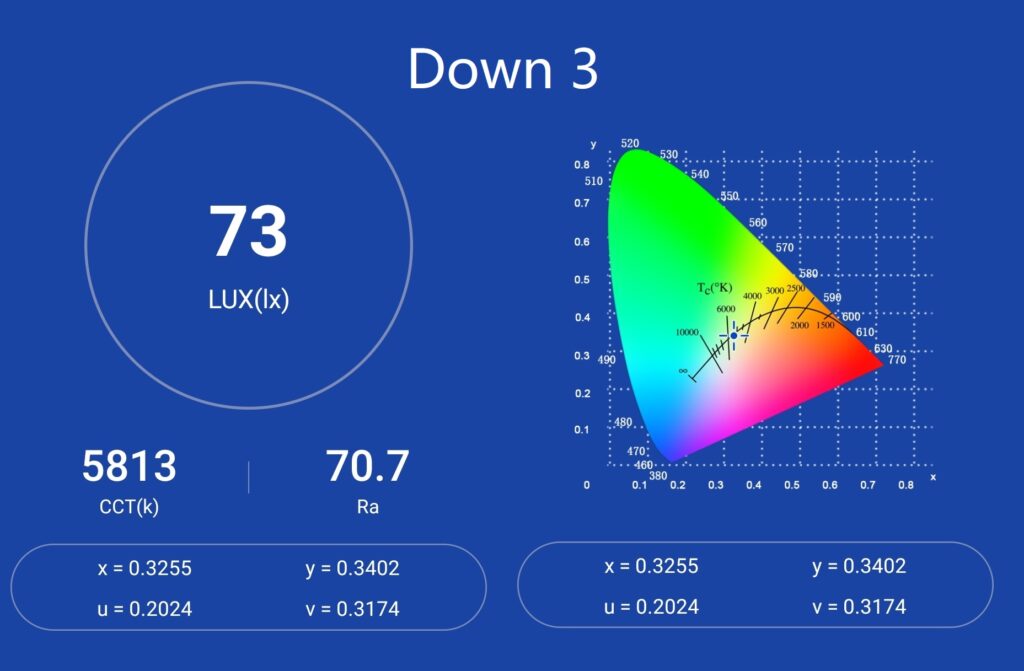

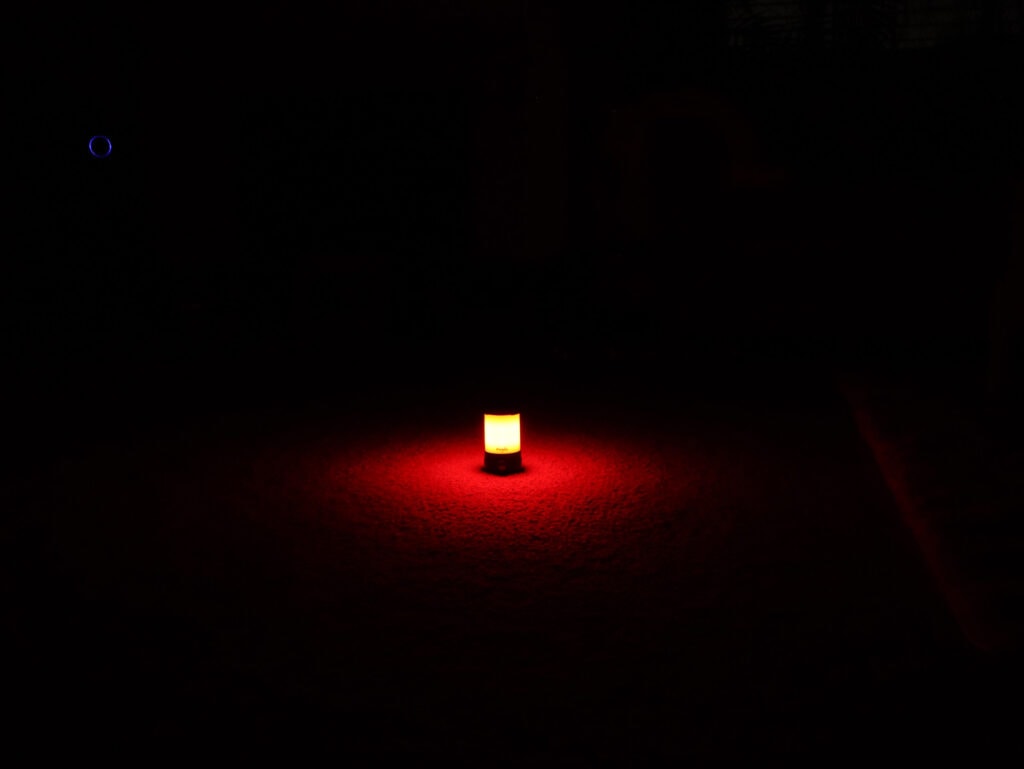
Dimensions and its competition
Dimensions:
| Fenix CL26R Pro | Millimeters | Inches |
|---|---|---|
| Height | 114 mm | 4.5 in |
| Base diameter | 66 mm | 2.6 in |
| Body diameter | 59 mm | 2.3 in |
Dimensions are rounded to the nearest millimeter, and to the nearest tenth of an Inch.
Weight:
| Fenix CL26R Pro | Weight in grams | Weight in oz |
|---|---|---|
| Without battery: | 201 g | 7 oz |
| With battery | 273 g | 9.6 oz |
Weight is rounded to the nearest gram, and to the nearest tenth of an Oz.
Flashlight size comparison with its competition:
Group 1, camping lanterns, left to right: Olight Olantern Classic Pro 2, Fenix CL26R Pro, Coleman 288
Group 2 left to right flashlights with diffusers: Mateminco MT-911, FireFlies PL09MU, Fenix CL26R Pro, Manker E14 IV, WildTrail WT3M
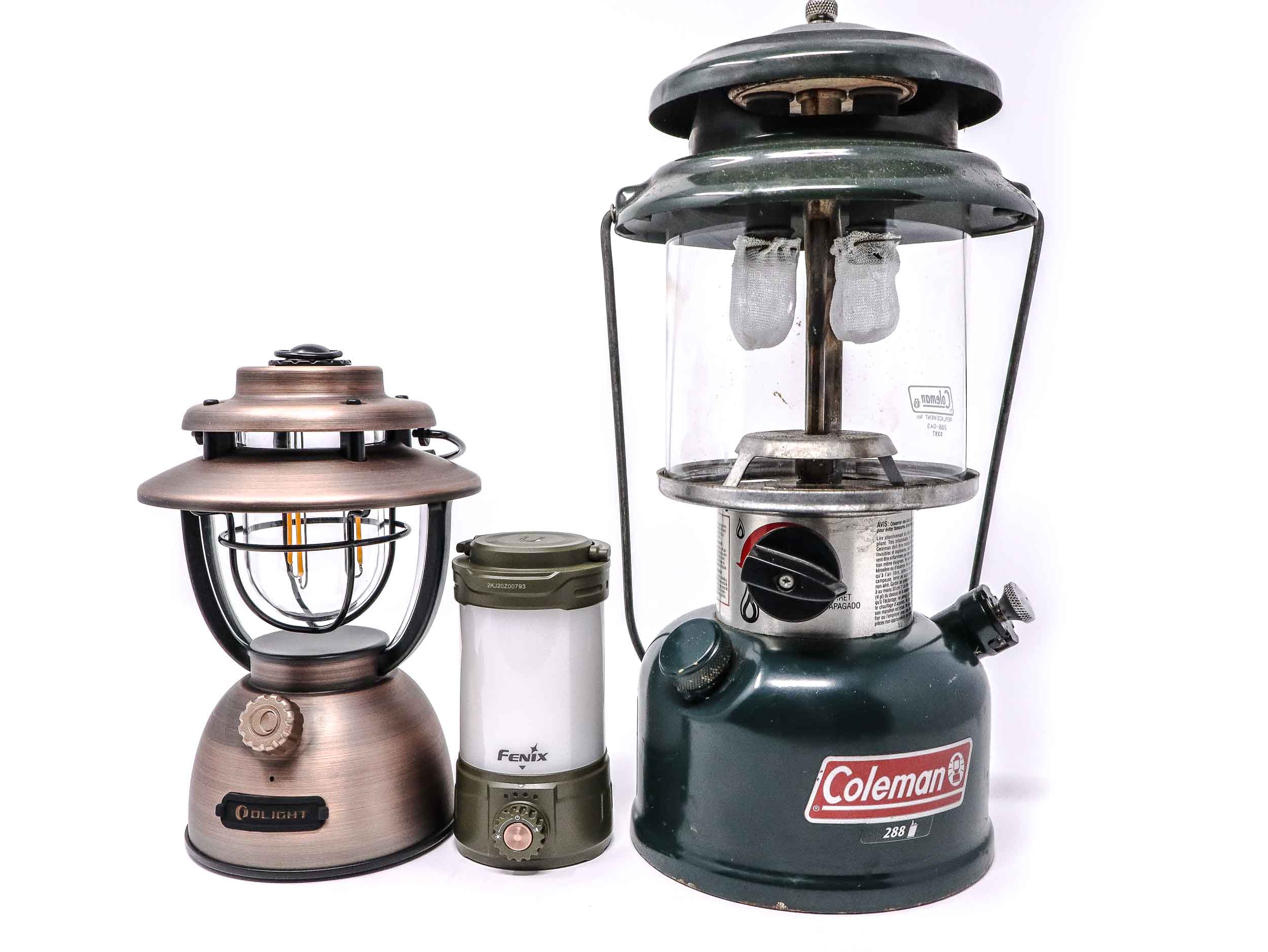
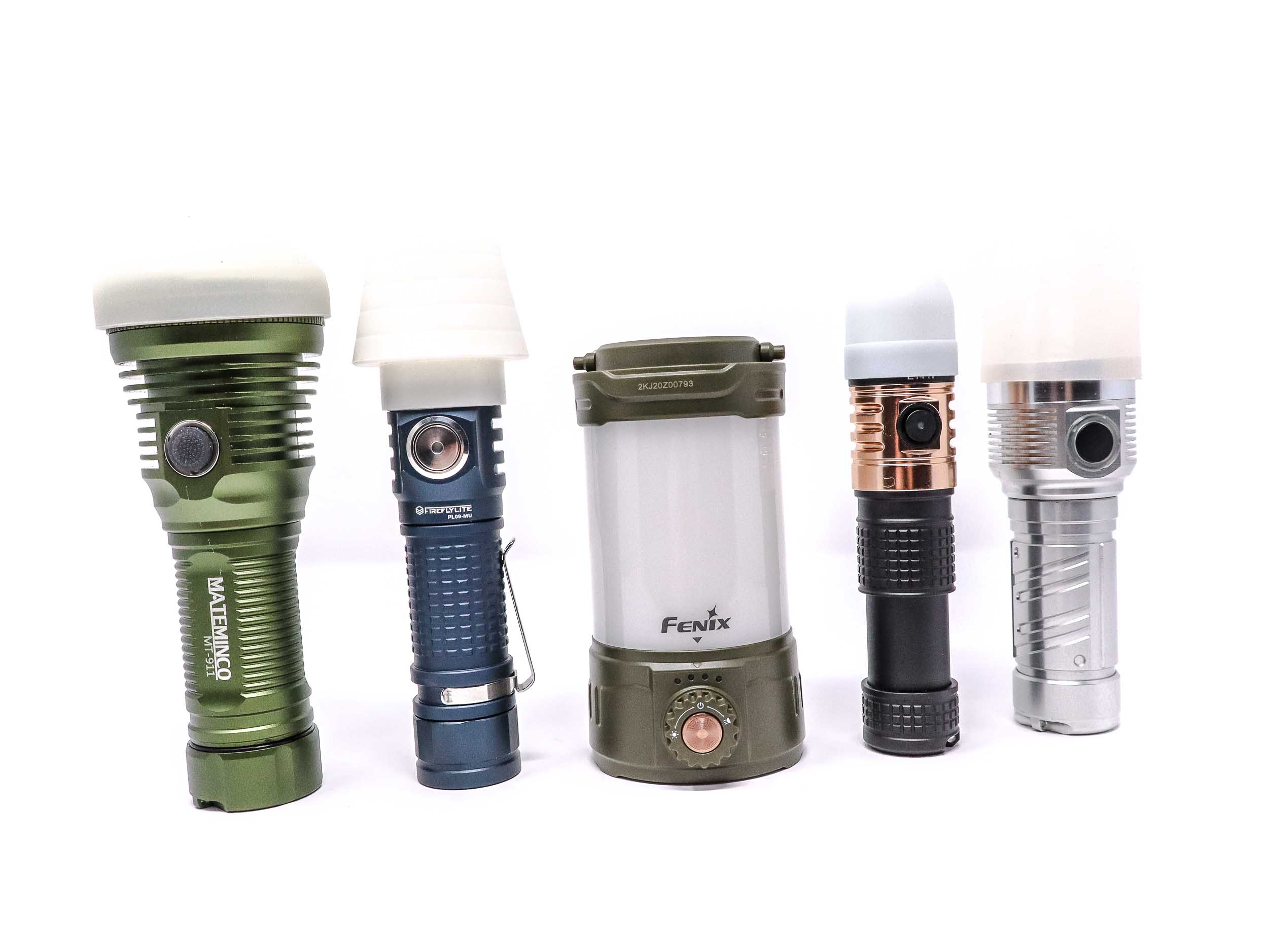
Fenix CL26R Pro UI: User Interface and Driver
I’m not sure what kind of driver the CL26R Pro is using, but my guess is it’s a buck driver with a separate channel for the red lighting mode’s LEDs since they run at a lower vF than the white LEDs. Whatever it is, Fenix is working some electronic wizardry here, but expect fully regulated output. The user interface gets a bit busy for a lantern with 3 lighting modes for the sources. There’s 3 standard brightness levels for the main source, 3 for the downward facing light, one for a single front-only light source, and 2 for the red light (one constant, one flashing). I’m not too crazy about the busy UI, but I trust Fenix to pull a hat trick with this one and keep it organized.
Available modes main light source:
- Front, Low, Medium, High
Available modes downward light source:
- Down 1, Down 2, Down 3
Available blinky modes:
- Strobe, S.O.S.
Available modes red light source:
- Constant, flashing
From OFF:
- Turn rotary switch clockwise first position: Turns on in Front
- Turn rotary switch counterclockwise first position: Turn on in Down 1
- Click and hold center switch: Turns on in Red constant mode
From ON :
- Turn rotary switch clockwise: Switches modes in sequence: Front-Low-Medium-High
- Turn rotary switch counterclockwise: Switches modes in sequence: Down 1, Down 2, Down 3
- Click and hold center switch: Turns on the downward light source if the main light is activated, or turns on the main light source if the downward light is activated
- If the downward light is on, turning the rotary switch counterclockwise switches the downward light source modes, and clicking the switch changes the main light source modes
- If the main light source is activated, clicking the switch activates the downward light source. Turning the rotary switch clockwise changes the main light source modes, and clicking the switch changes the downward light modes. The sources are independently controlled, but switching off one source turns them all off.
Mode memory:
- N/A
Shortcuts:
- N/A
Low voltage warning/protection:
- Yes. The output drops very low until LVP shut down
Strobe/blinkies
- Beacon flasher for the red light
Lock-out mode:
- None
PWM
- None visible
Additional/summary info on the UI:
- The UI works fine for the functionality of a lantern. The use of a single rotary switch and an e-switch might necessitate some concessions and shortcuts for switching lighting modes and brightness levels. I think Fenix did a good job though, and the UI helps keep things simple and it works fine. Lantern UIs should be simple and easy to negotiate since most buyers who pick up the CL26R Pro won’t be enthusiasts and probably don’t want to be encumbered with a complex UI.
Fenix CL26R Pro Charging and batteries
The Fenix CL26R Pro takes a 21700 size li-ion battery, and a round of applause to Fenix is in order here since it’s not proprietary, user-replaceable, and the CL26R Pro can accommodate just about any 21700 you stick in the tube. With their optional ALF-18 adapter, you can even use an 18650 cell. Fenix includes their bog standard ARB-L21-5000 V2 cell. This is a button top, protected 5000 mAh 21700 cell. It’s a rewrapped cell and I don’t know who supplies it, but Fenix uses high quality batteries.
The CL26R Pro has USB type C for charging input and a USB type A output for the power bank functionality. I think this is a nice arrangement, and Fenix rates the charging input at 5 volts 2 amps, and the same on the power bank output. According to my Hidance USB tester, on a C to C cable I got about 5 volts 2 amps, and about the same on the power bank when charging the Nightwatch NI03 Valkyrie. Interestingly (annoyingly), the power bank doesn’t work with the lantern is off. To use the power bank, from off, plug in your device and turn the rotary switch on to activate the power bank. It doesn’t matter which mode you use (I didn’t test the red light), so thankfully you can use it on the lowest setting (Down 1), but still, it was annoying you can’t charge off the power bank on standby. While a 5000 mAh battery isn’t low capacity, if you’re asking the CL26R Pro to light your tent and charge your device, that battery will drain quickly, but in an emergency it’s nice to have.
| Charge type | Fits | No fit | Charge time |
|---|---|---|---|
| USB type C | 21700 and 18650 (with adapter). Flat top and button top standard length unprotected and protected | Some protected integrated charging, or very long 21700s | 3 hours |
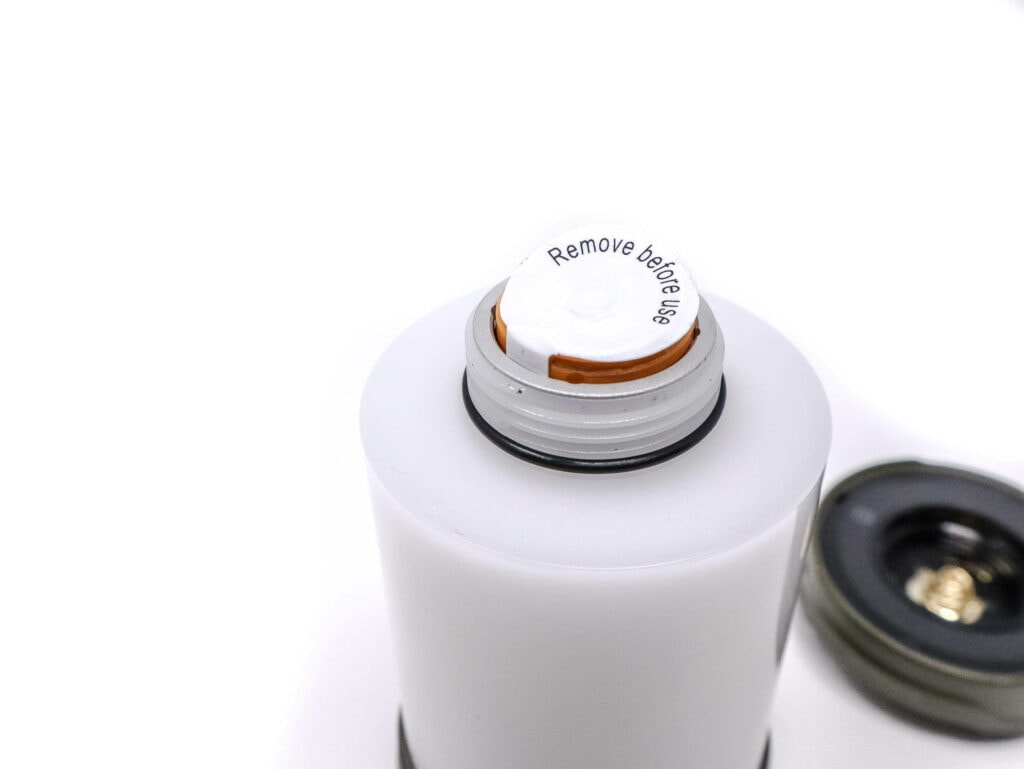
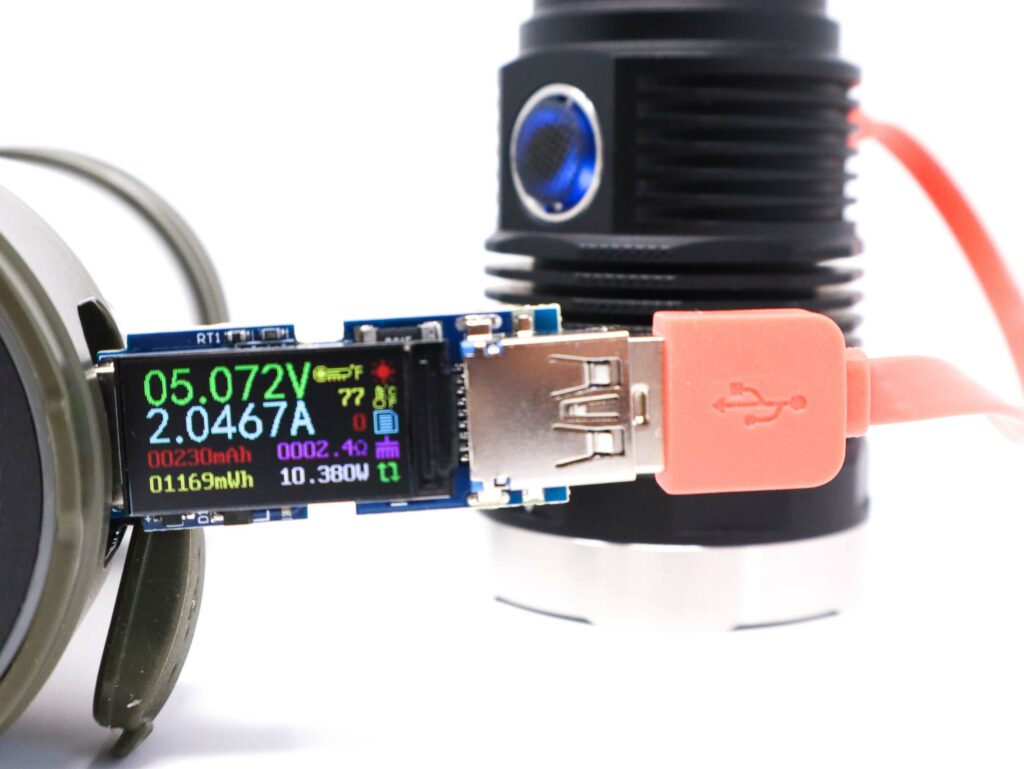
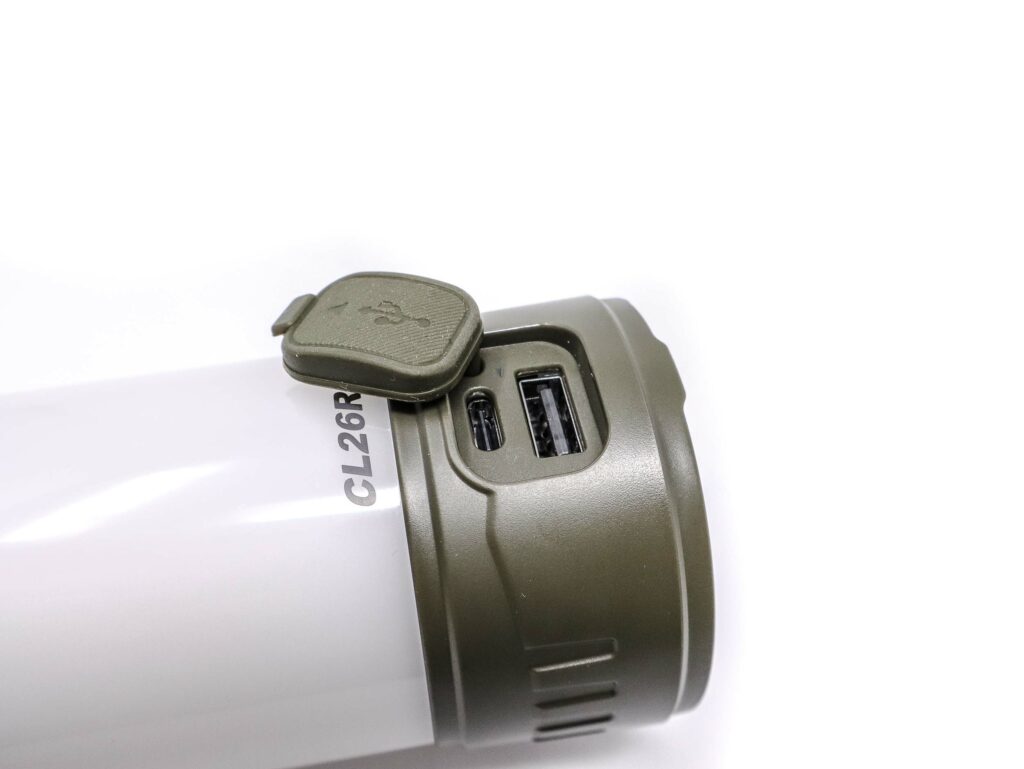
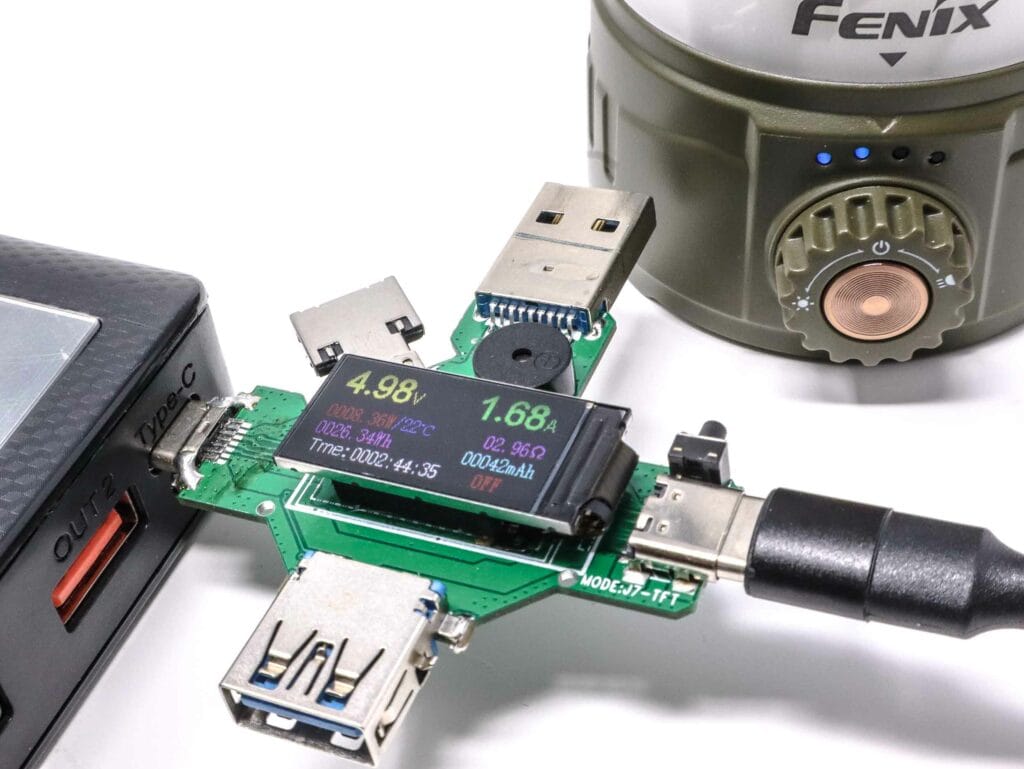
Performance test
Lumen measurements
How Lumens are Measured: Understanding ANSI FL1 Standards How Lumens are Measured: Understanding ANSI FL1 Standards: The ANSI FL1 standards specify that output in lumens should be measured 30 seconds after turning on, as this is the standardized time for measuring brightness according to the industry standard. This is why we focus on this part in our measurements. The ANSI FL1 standards require an ambient temperature of 22 ± 3°C. We record the ambient the ambient temperature to identify potential reasons for any observed discrepancies.Lumens are measured in my home made 50 cm integrating sphere. I use a Digi-Sense 20250-00 data logging luxmeter. The integrating device has been calibrated with a Convoy S2+ measured to 260 Lumens and the figures are within 10% of actual. No current measurements this time due to the isolated current path. Measurements were taken with the fully charged Fenix ARB-L21-5000 V2 battery.
| Mode | Specs | turn on | 30 sec | 10 minutes |
|---|---|---|---|---|
| Front | 25 | 21 | 21 | – |
| Low | 50 | 49 | 50 | – |
| Medium | 200 | 191 | 191 | 181 |
| High | 500 | 418 | 418 lm | 406 |
| Down 1 | 5 | 3.7 | 3.7 | – |
| Down 2 | 50 | 50 | 50 | – |
| Down 3 | 150 | 140 | 148 lm | 146 |
Parasitic drain:
- N/A
I didn’t have a way to measure the Down 3 plus High modes combined, and I think Fenix just took the 500+150 on the specs to get their 650 Lumen figure. The outputs look okay. A bit down from spec for some, but nothing drastic.
Fenix CL26R Pro Battery Life: Runtime graphs
How Runtimes are Measured: Understanding ANSI FL1 Standards About ANSI FL1 runtime standards: The runtime is measured until the light drops to 10% of its initial output (30 seconds after turning on). This does not mean that the flashlight is not usable anymore. The last column shows how long the light actually works till it shuts off. If there is a + symbol, it means that the test was stopped at that particular point, but the light was actually still running. This happens on certain occasions, with certain drivers, firmware, or batteries.Runtimes are measured in my 50 cm integrating sphere with a Digi-Sense 20250-00 data logging luxmeter. The integrating device has been calibrated with a Convoy S2+ measured to 260 Lumens and the figures are within 10% of actual. The Fenix ARB-L21-5000 V2 battery was fully charged for each runtime and I tested Medium, High and Down 3. The other modes had much longer runtimes. I also didn’t measure temperature this time since plastic is not really a great media for heat transfer.
| Mode | Specified runtime | Measured runtime ANSI | Time till shut off |
|---|---|---|---|
| Medium | 13h | 8h 46min | 12h 19min |
| High | 10h | 5h 5min | 5h 48min |
| Down 3 | 15h | 13h 52min | 13h 52min |
The runtimes are a mixed bag here. The High mode is coming in at half the advertised duration, while the other two are all over the map also, with Medium mode hitting ANSI after just 8 hours 46 minutes. Down 3 looks good, even if a bit short from spec. Regardless of the spec being a bit off, the outputs are laminar and consistent, perfect for a fixed lighting source like a lantern. The step down to roughly 50% for High happened a bit quick though, only 20 minutes in, and I’d have liked to see it last a bit longer.
The other modes went much longer, so I think they’d be better to use for long-term lighting. I didn’t graph the temperatures, but the housing didn’t get hot at all on High. Maybe Fenix was being a bit conservative here?
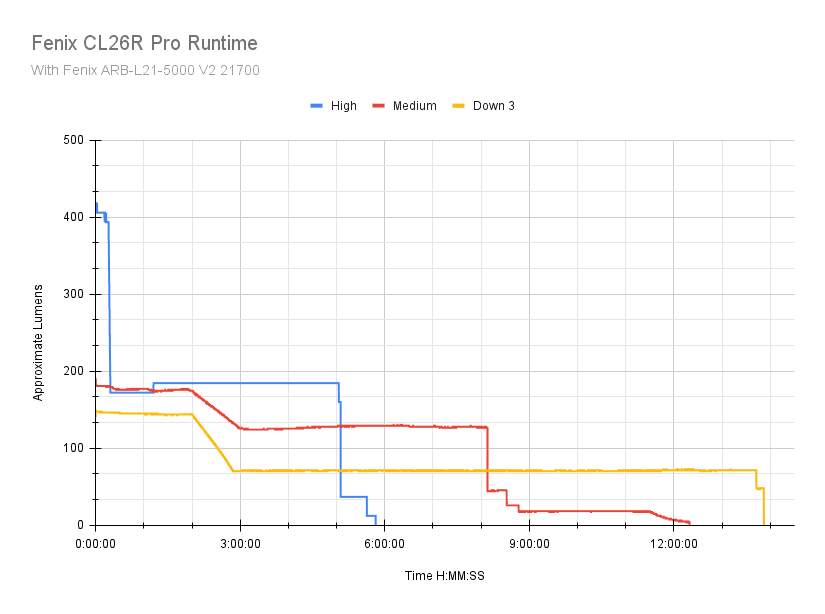
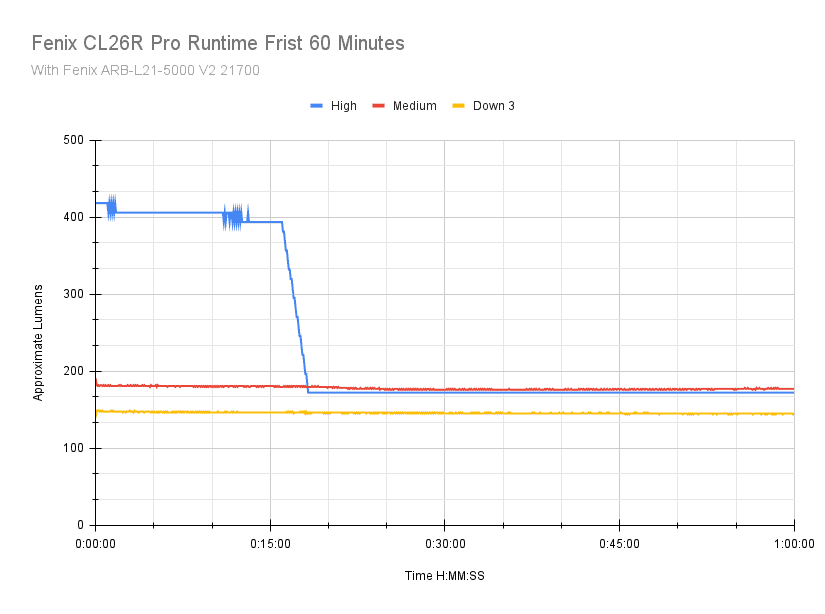
The comparison graph shows some other lantern and lantern-type lights. The Fireflies PL09MU isn’t a ‘lantern,’ but with the handy-dandy diffuser, it can moonlight as one, and I actually use it a lot around the house like that. It’s a bit of an unfair advantage here since it has almost 1900 Lumens from the start, but it’s short-lived and steps down to more normal levels after about 45 seconds. The Wuben F5 and Olight Olantern Classic Pro 2 both do very well, and I’ve used both on camping trips to great effect. The OLantern has a 10 Ah battery, so the runtimes are way longer, but the output is consistent. Each of those would be excellent lanterns and they also have power banks built in.
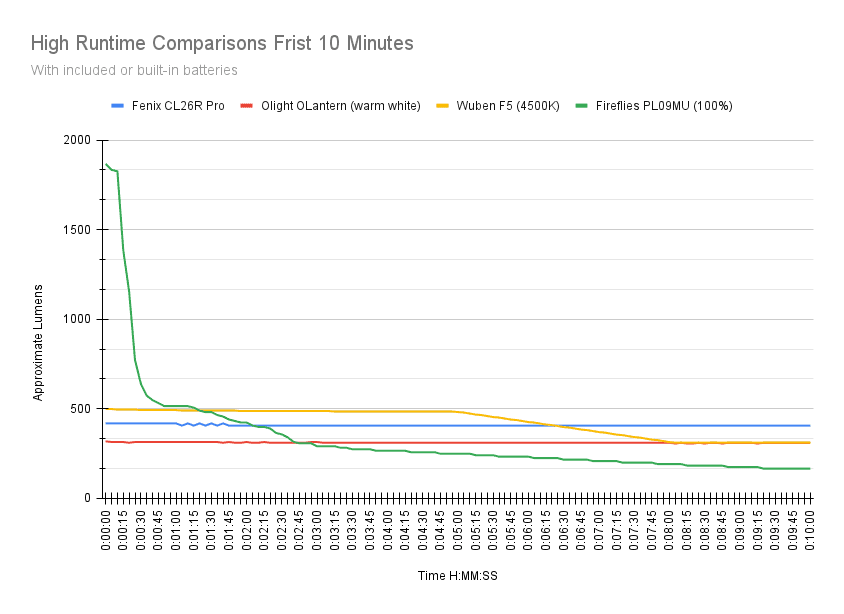
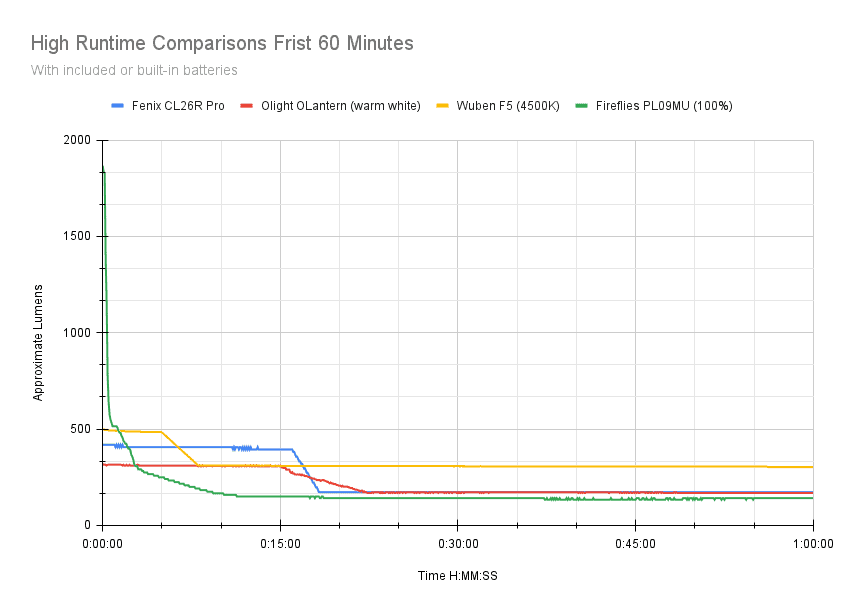
Peak beam intensity and beam distance measurements
About Peak beam intensity: Understanding ANSI FL1 Standards About peak beam intensity The calculated value of distance in meters at which the flashlight produces a light intensity of 0.25 lux. (0.25 lux is about the brightness of a full moon shining on an object). This means that the intensity has decreased so much, it becomes difficult to see darker objects, or objects that don’t reflect light. The columns ‘Meters’ and ‘Yards’ use rounded numbers.Beam distances are measured using a Uni-T UT383S luxmeter measured indoors at 5 meters using the included fully charged ARB-L21-5000 V2 battery. Measurements taken at 30 seconds.
| Mode | Specs | Candela measured | Meters | Yards |
|---|---|---|---|---|
| High | ? | 200 cd | 28 | 31 |
| Down 3 | ? | 125 cd | 22 | 24 |
Measuring the throw of a lantern, like the Lumens, is tricky, and the only two readings I could glean at 5 meters was High on the main light and Down 3, so that’s what you get. Obviously, lanterns aren’t designed for distance, just area, and Fenix says the High mode should cover 15 meters, and if going off my figures, I’m doing better than that. In real-world use, I think the CL26R Pro on High on a dark night can reach this far.
Beamshots
Camera settings and distance: Photos taken with a Canon R100 with a Canon R-FS 18-50 mm STM lens set to 1/60s f4.5 and ISO1600 with 5000K WB.
Beamshots of the following general purpose-use LED flashlights compared
- Fenix CL26R Pro (high mode)
- Coleman 288
- Olight Olantern Classic Pro 2 (warm white mode)
- Fireflies PL09MU with diffuser (top of ramp)
Please note that the following beamshots are mainly intended to showcase the beam pattern and beam quality, rather than overall performance. These images are typically taken directly after activation, and in different seasons or weather conditions, and therefore do not fully represent its overall performance. For accurate performance metrics, such as output, beam distance, and runtimes, you need to look at the performance section of this review.
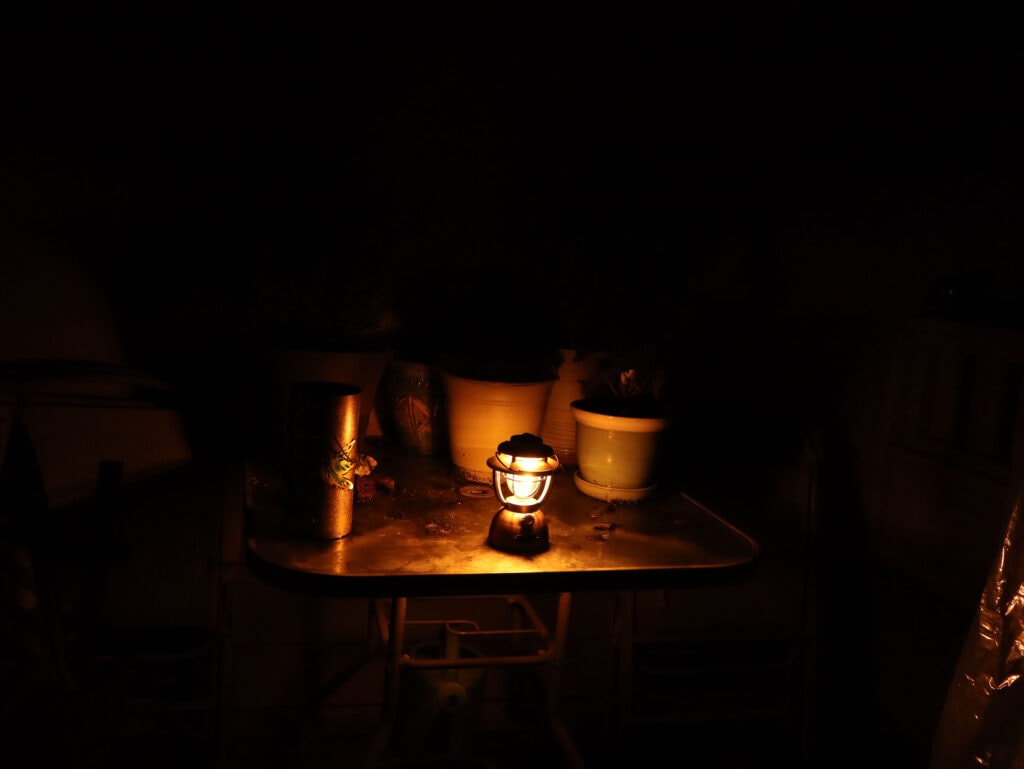
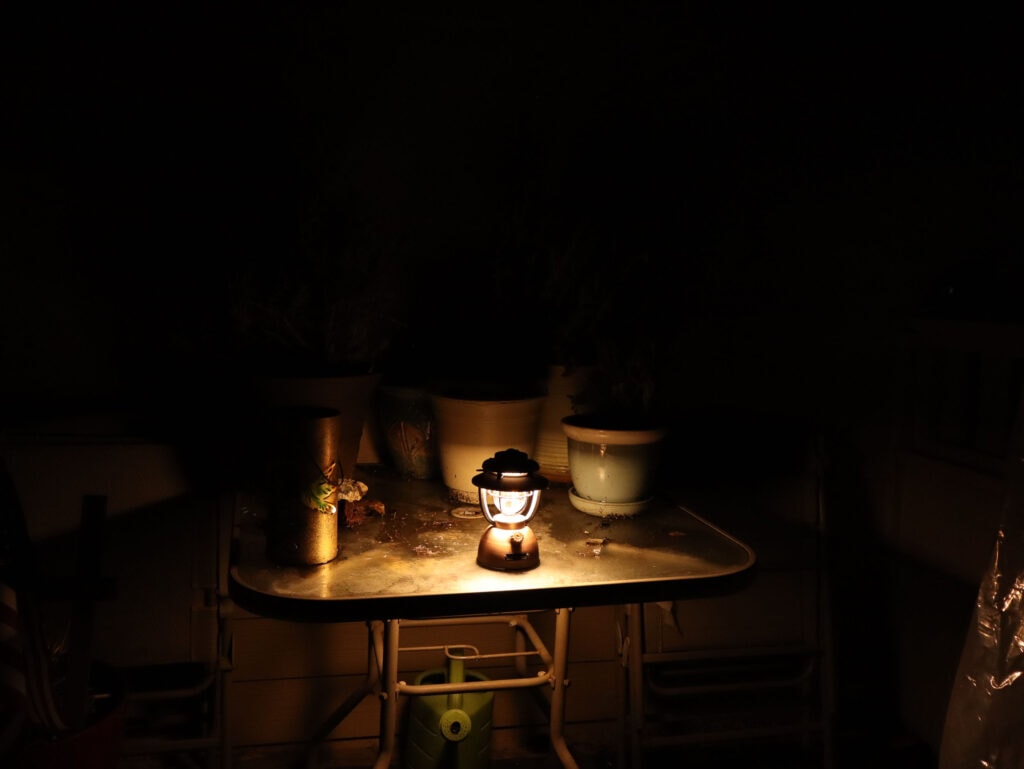



Disclaimer: This flashlight was sent to us for review at no cost by Fenix Lighting US. We have not been paid to review, nor have we been holding back on problems or defects.
Final Verdict
Pros
- Rotary switch is easy to use
- Very compact and lightweight
- Solid build quality
- Great sustained output
- Nice warm white tint
- Downward light source
Cons
- Handle seems a bit flimsy
- Power bank only works when the light is on
Explanation on star ratings:
1: Avoid: a match would be a better choice – 2: Poor: significant defect or issues; almost unusable – 3: Average: some defects or issues; but still usable 4: Good: recommended (minor issues) – 5: Great: highly recommended

5 stars: ★★★★★
While our star rating provides a reliable indicator, we encourage you to read the full review to make an informed decision based on your own needs and preferences.
I’ve been camping my whole life and the evolution of camping technology has been amazing, especially in the last 10 years around portable lighting. Before, you were limited to heavy, bulky, and inherently dangerous battery or fossil-fueled lanterns.
However, it was all we had and for what they were, worked great. LED tech has significantly improved portable light sources like the Fenix CL26R Pro. Overall, I’m pretty impressed with it. It’s super-simple to use: Just turn the knob and you’re done! It takes about 3 minutes (if I have to pump it up) to start my Coleman 288 lantern on a good day.
The CL26R Pro is delightfully light and compact, has impressive runtime on useful brightness levels, multiple lighting modes, and other goodies to enhance usefulness. It also doesn’t emit super hot gasses or poisonous fumes so I can use it indoors without dying. I enjoyed the small size and light weight, warm white tint for the main source and the downward light was also useful. Having a power bank is a huge benefit outdoors since you can charge (at least top-off) devices.
While my Coleman was brighter than the Fenix and runs longer on the highest setting, those advantages are inconsequential. Plus, you can use it to charge your devices (in a pinch). There’s not much I don’t like about the CL26R Pro.
If I had to nit-pick, it was annoying that the power bank only works when the light is on, and the handle seems a bit flimsy. While fine under normal use, it might break if you rough it up. That’s neither here nor there though and not a deal-breaker. If you’re looking for a small, but highly versatile and bright lantern, I recommend giving this a look. 5 stars for the CL26R Pro.
Buy your Fenix CL26R Pro with a discount
Get 10% off every purchase at Fenix Lighting US, by using our exclusive 1lumen discount code: 1lumen10
1lumen selects and reviews products personally. We may earn affiliate commissions through our links, which help support our testing.